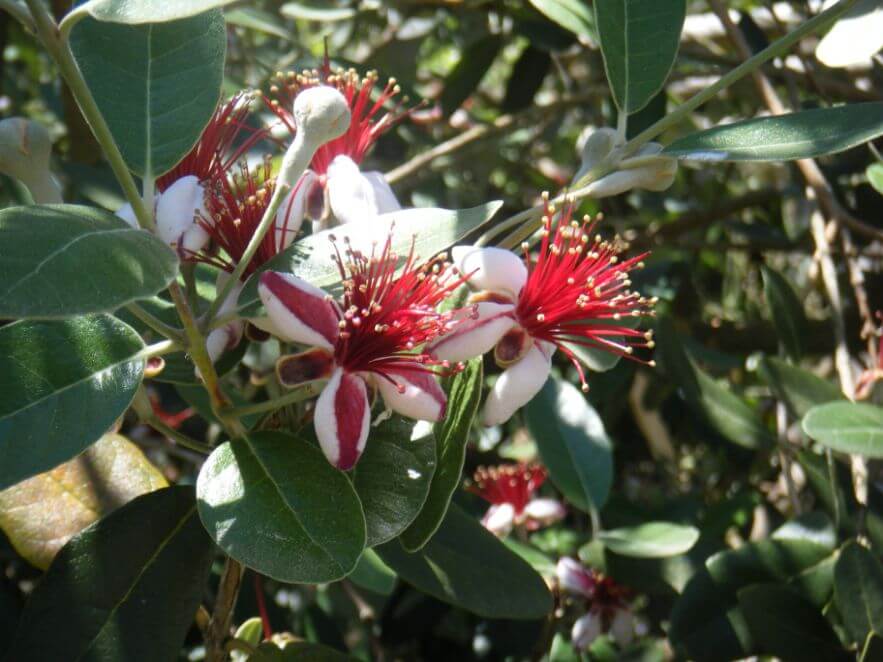One of the most common plumbing callouts we attend is caused by tree root intrusion. As the name suggests, this occurs when roots break into old pipes in search of water and nutrients. Despite its commonality, the cost of fixing it isn’t small: the wrong tree choice can leave Australian homeowners paying anywhere from $8,000 to $15,000 in pipe repairs.
After inspecting blocked drains across Sydney for over 20 years, we’ve seen first-hand the havoc caused by invasive roots. And while pipe relining is the best fix for damaged drains, prevention is even better. Over the years, we’ve seen so many cases of tree root intrusion that our team has built up valuable horticultural knowledge to help us confidently guide customers on which trees are truly pipe safe.
Our verdict? Feijoa trees are the most common type we recommend, because not only are they considered pipe-safe, but they also deliver delicious fruit. This makes them a win-win for homeowners who want both a productive garden and peace of mind.
Why Feijoas Are the Smart Choice for Pipe-Conscious Homeowners
Unlike many popular backyard trees, feijoas (also known as pineapple guava) have a non-invasive root system that won’t crack pipes or invade underground drains, even when they’re planted on top of the drain (but we still don’t recommend doing this). That makes them one of the safest choices for Sydney homes, where ageing infrastructure and tree root intrusion are a common (and costly) problem.
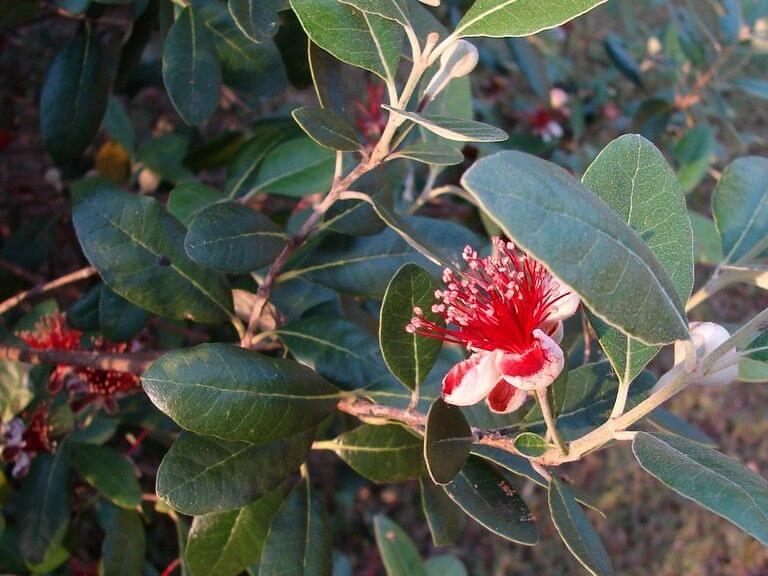
Beyond their pipe safety, feijoas offer plenty of other advantages:
- They’re pest-resistant: Resilient when faced with fruit fly infestation
- Drought-tolerant: Can withstand long periods without water, thus thrive in Australia’s harsh climate
- Versatile: Whether planted as a hedge for privacy, a decorative feature, or even in pots for smaller spaces.
- Hardy and low-maintenance: They suit both seasoned gardeners and first-time growers
Best of all, you’ll enjoy a steady harvest of delicious, nutrient-rich feijoa fruit that’s completely free! As a result, you have a tree that looks good, tastes great, and saves you thousands in potential tree root damage repairs. They are one of the smartest landscaping investments you can make.
How the Wrong Trees Cost Sydney Homeowners Thousands
It’s no exaggeration to say that tree root invasion is the number one cause of blocked and damaged pipes in Sydney homes. Think of it like a small crack in a windscreen, it gradually increases over time until it threatens to shatter the whole glass. Tree root intrusion works the same way – a tiny crack in your sewer line can quickly turn into a costly nightmare.
Because roots are naturally drawn to the constant source of water and nutrients inside pipes, they slither through even the smallest opening. Once inside, they spread fast, entangle, and thicken into a dense mass that blocks your pipes.
The result? Backed-up toilets, slow-draining sinks, foul odours, and eventually complete pipe collapse. This means a full pipe replacement job, excavation included, costing you anywhere between $8,000–$15,000.
Some trees are especially notorious for wreaking havoc underground. Avoid willows, sycamores or other water-hungry species; they’re the main culprits. Just ask your landscaper or nursery clerk with horticultural knowledge which species send out aggressive root systems, actively seeking out pipe moisture.
If you’ve moved into a property with these trees already established, it’s worth booking a professional CCTV pipe inspection to catch early signs of intrusion before they escalate & require tree root damage repairs.
Why Feijoa Root Systems Protect Your Property Investment
Feijoa trees have shallow, non-invasive root systems, meaning they don’t dig deep into the soil and chase underground pipes for moisture. Unlike willows or sycamores, their roots spread closer to the surface, meaning they get sufficient moisture when it rains. As such, they are far safer for suburban gardens with ageing infrastructure.
As a rule of thumb, we recommend planting feijoas at least 2–3 metres from sewer or stormwater lines. As pipe relining experts who’ve inspected thousands of Sydney drains, we can confirm feijoa trees offer peace of mind and long-term protection against costly root-related damage.
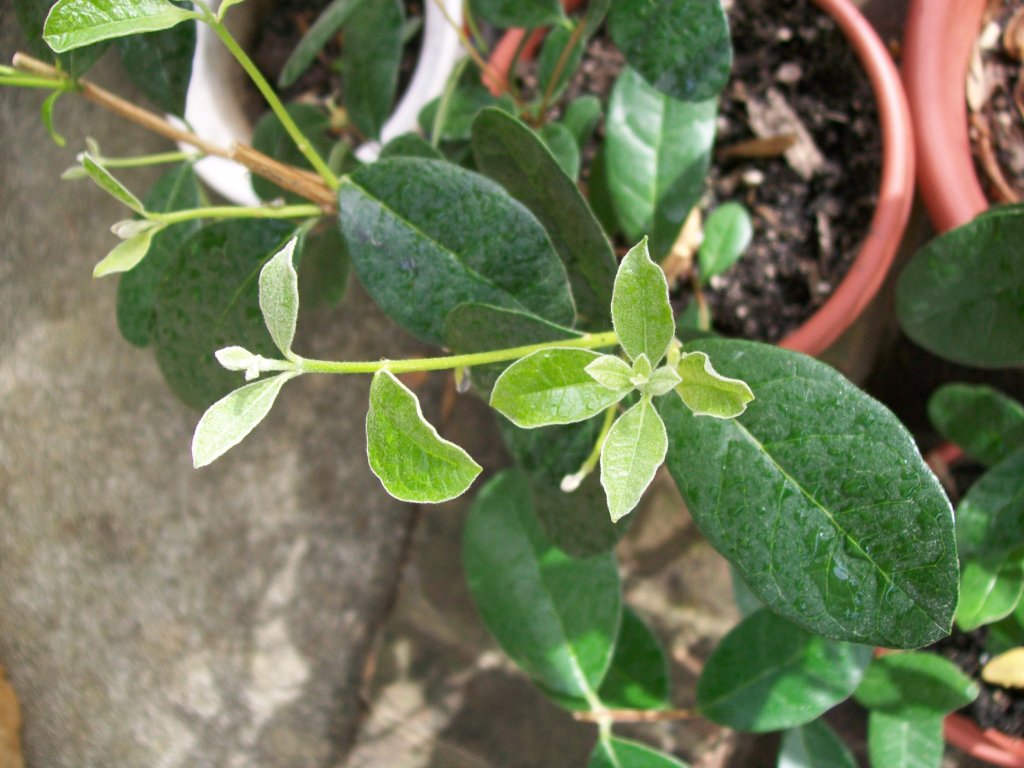
Essential Feijoa Care for Healthy Growth
Here are some tips for growing feijoa fruit trees.
1 – Find the Perfect Sunny Spot
Feijoas thrive best in cool winters and moderate summers for the flowering and fruiting seasons. Ideally, you want to plant them in a sunny position with well-drained, compost-rich soil. Good drainage prevents excess moisture from pooling around underground pipes, which could otherwise attract invasive tree roots nearby.
When choosing a location, remember the rule of thumb: plant two to three metres from sewer or stormwater lines. For best results, plant in autumn or winter. This gives the roots time to establish before spring fruiting begins. Within two years, you’ll enjoy steady harvests from a hardy, pipe-safe tree.
2 – Plant Feijoas Together for Maximum Benefits
If you want a healthy feijoa tree that produces excellent harvests, planting several varieties together is the key. Feijoa plants thrive when grouped, as cross-pollination improves yields and ensures a longer season of their tropical-tasting fruits. They’re also excellent as hedges or privacy screens, meaning you’re killing two birds with one stone.
For the best results, position them thoughtfully along fence lines or boundaries. Just make sure they are kept clear of underground pipes to protect both your trees and plumbing.
3 – Understand and Care for Their Root System
Feijoas have a shallow root system, which, as we’ve discussed, makes them one of the most reliable options for pipe-safe landscaping in Australia. You also know the importance of planting them in free-draining soil (slightly acidic soil is best) to prevent waterlogging and encourage strong, healthy growth and more fruit.
Then, apply a balanced fertiliser during the growing season to provide consistent nutrients. Finally, mulch the root areas to retain moisture and suppress weeds. Regular maintenance keeps the tree productive while protecting your underground pipes.
4 – Master Their Planting Preferences
While Feijoa trees flourish when planted in fertile, free-draining soil, they can also adapt to more coarse, rocky soil or clay (as long as the soil doesn’t remain waterlogged). It’s this versatility that makes feijoas great, thriving both in pots and directly in the ground. And while they love sunlight, they also tolerate partial shade, especially in hotter climates. And a balanced, slow-release fertiliser or well-managed compost improves growth and fruit yield.
When it comes to climate, feijoas prefer long, warm summers but are hardy enough to tolerate cool winters. By planting in early winter, you give the young trees time to establish roots before the growing season. Then, for the best results, prune and fertilise in early spring to boost fruiting potential. By timing your planting and care, you’ll enjoy the most fragrant, flavoursome fruit from a tree that suits many Australian backyards.
Strategic Pruning for Fruit Production and Infrastructure Protection
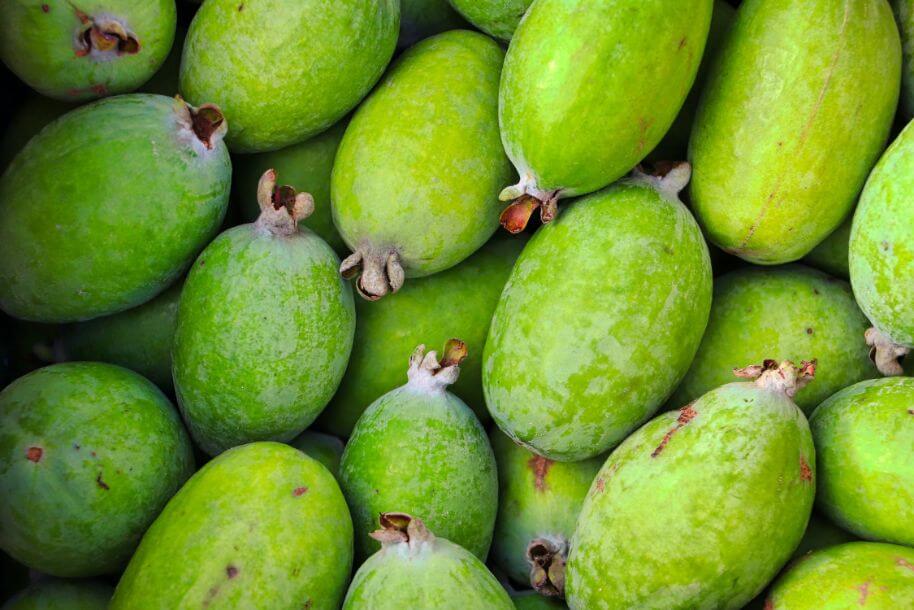
Perfect Timing: When to Prune Your Feijoas
Now, if you really want optimal results with lush evergreen foliage, prune your feijoa tree in spring, ideally as late as early April or May. This timing respects the tree’s fruiting cycle, encourages healthy growth, and reduces the risk of frost damage to new shoots.
Understanding your tree’s growth pattern ensures that pruning improves fruit yield without compromising structural integrity or nearby underground pipes.
5 Expert Pruning Tips for Feijoa Trees
- Prune for airflow and pollinator access – Feijoas are self-pollinating, so remove a few thicker branches from the bottom and throughout the canopy to improve airflow, reduce disease risk, and allow bees and other pollinators to reach flowers more easily.
- Height management timing – Feijoas can reach up to 5 metres high, so avoid heavy pruning until the tree is about 3–4 years old. This keeps your tree manageable and prevents roots from straying toward pipes.
- Seasonal timing to avoid frost damage – Late pruning in early spring encourages strong growth while protecting tender shoots from frost. Avoid cutting too late into winter.
- Proper tool use and branch selection – Use sharp, clean pruning tools and focus on removing criss-crossing branches or those hanging near the ground to minimise stress on the tree and prevent interference with underground infrastructure.
- Leaf node cutting technique – Trim back toward the leaf node for clean cuts that promote regrowth, while being careful not to crush the branch. This encourages strong, productive branches for future fruiting.
Professional Tip: For trees planted near utilities, consider CCTV guidance to ensure roots and underground services are protected during pruning.
Complete Feijoa Planting Guide for Pipe Safety
If you’re considering planting feijoas, always place them a safe distance from underground services. If you’re unsure where your pipes run, have a plumber come out for an inspection. It’s so important to keep a safe buffer from sewer lines for lasting pipe safety.
For the best chances of success, plant in the off-season (late autumn to early winter), to give roots time to settle before the spring growth.
Choose varieties to suit your purpose: larger-fruited cultivars for eating fresh, smaller types for preserves, or compact forms for small gardens.
Case Study – North Bondi Success
After removing invasive trees from a cliffside property exposed to harsh coastal winds, we recommended feijoas. Two years later, during a routine plumbing inspection, the trees were not only pipe-safe but thriving, and already producing fruit despite the challenging conditions.
Building a Beautiful, Pipe-Safe Landscape with Feijoas
Now, for the fun part, time to get creative. As mentioned, Feijoas are incredibly versatile and can transform your garden design. Their dense foliage makes them excellent for hedging, privacy screens, or fence line plantings, which means you get both beauty and function, as well as potential nutritious food, without risking your underground pipes.
When paired with other non-invasive species, such as lilly pilly or flowering natives, feijoas create a layered, visually appealing garden that remains low-maintenance and pipe-safe.
They also integrate seamlessly with existing landscaping, whether you’re softening the look of retaining walls, framing outdoor entertaining areas, or filling smaller garden spaces. This combination of aesthetics and practicality means feijoas work just as well in suburban backyards as in coastal or hillside locations.
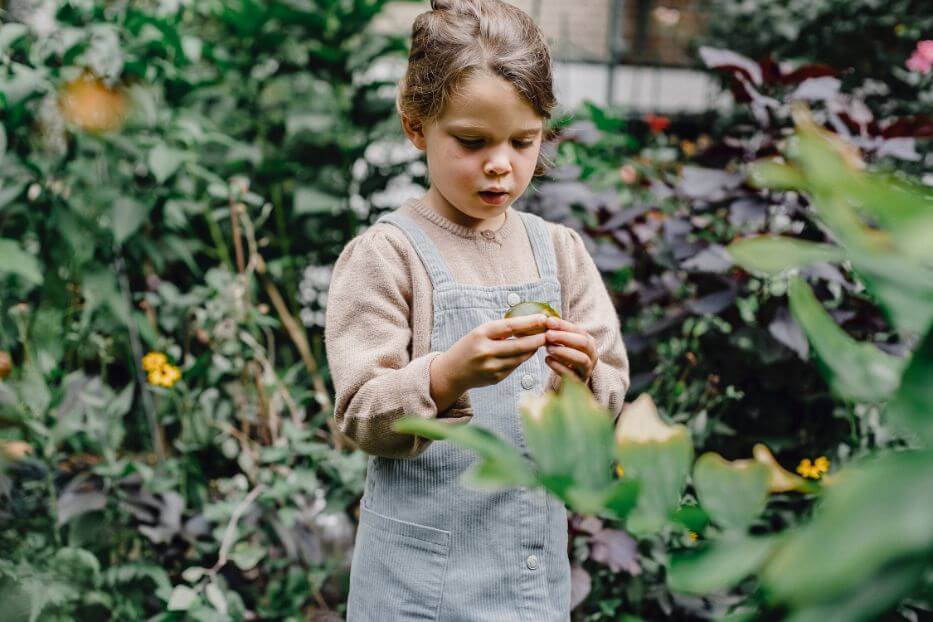
When to Call the Professionals
Even with the smartest tree choices, some homes already face hidden pipe issues. Before planting, consider a CCTV drain inspection to map out your underground plumbing and prevent future mishaps. If you’re noticing slow drains, gurgling pipes, or damp patches in the garden, then you definitely need an inspection because these are the telltale signs of existing root damage.
At The Relining Company, we specialise in non-invasive, dig-free method services. From the initial inspection to root removal and full pipe relining, we provide peace of mind before landscaping or need urgent pipe repairs.
- Book a free consultation with our team
- Call us directly on (02) 8339 4695
- Request an obligation-free quote online
Your Path to Pipe-Safe Peace of Mind
Feijoas prove you can enjoy a productive, beautiful garden while keeping your pipes safe. With expert care and the right landscaping strategy, you’ll save thousands in potential repairs while adding long-term value to your property.
The Relining Company is trusted across Sydney for delivering the right advice and the most advanced no-dig technology. Contact us today for your obligation-free quote and discover why so many homeowners rely on our reputation for quality, service, and results.
FAQs
How do you care for feijoas in pots?
Choose compact feijoa varieties, use draining soil, and place the pot in full sun for best results.
What is the best fertiliser for feijoas?
A balanced fertiliser applied in the growing season supports healthy roots, fruiting, and consistent new growth.
When to prune feijoa trees in Australia?
In Australian gardens, it’s best to prune lightly in late spring or early autumn to avoid frost damage.
How to maintain feijoa trees?
Provide free-draining soil, regular watering, and occasional pruning to keep feijoas productive and attractive in Australian gardens.
Back to Top